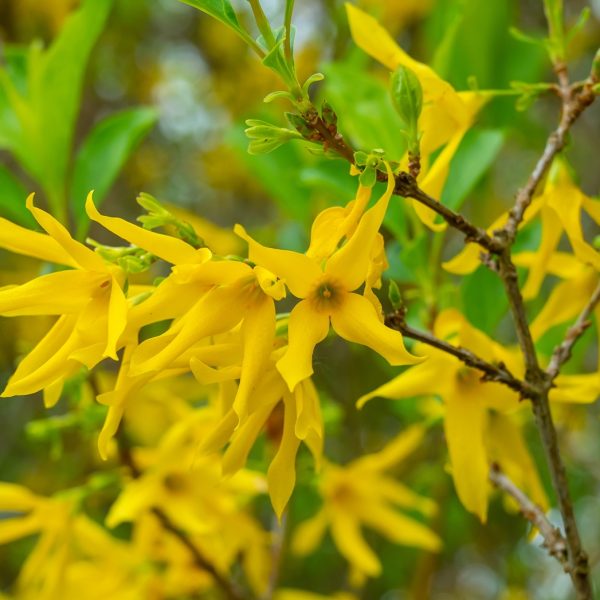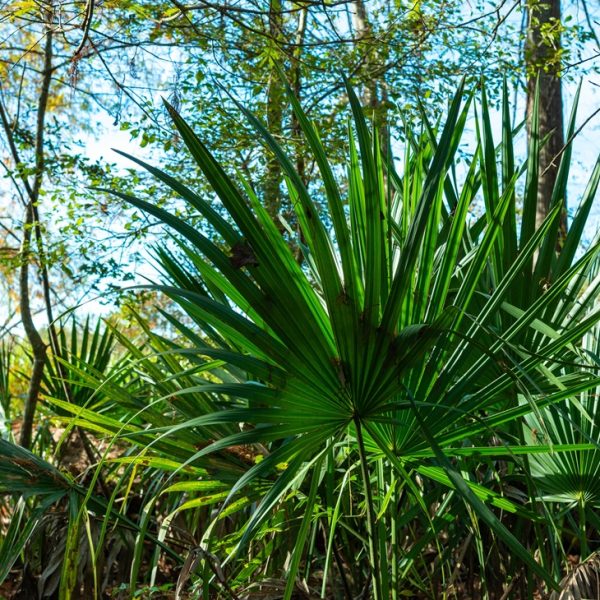Herbalist Simon Mills explores how to use herbs to reduce acid-associated problems, such as reflux and indigestion.
Contrary to common belief excess acid does not usually lead to digestive problems. The main rationale for using antacids is to protect sensitive surfaces from damage that follows disruption in various other digestive functions. Indeed stomach acid is one of our most important defences: it sterilises and begins the breakdown of foods, so as to protect our immune system and tissues from these foreign materials. We should be very careful in using acid-blocking agents at all. So to use herbs to reduce acid-associated problems, it is wise to understand some of the mechanisms involved.
Treatments for excess stomach acidity are used in the following key problems. (Note that some of the conventional terms are from the USA where they spell Oesophagus without the ‘O’)
Key problems
Heartburn
This is one symptom of indigestion or ‘functional dyspepsia’. It is a burning sensation in the middle of the chest, usually after eating and worsened when lying down or stooping. It is often associated with

- increased visceral activity such as irritable bowel syndrome (IBS)
- ‘diaphragmatic spasm’ linked to stress, with hyperventilation (shallow breathing) and palpitations
- abdominal congestion such as pregnancy, obesity, or bloating.
Stress in heartburn is also associated with increased sensitivity of the lower oesophageal mucosa (1). These and other predisposing factors are elaborated below.
Gastro-oesophageal reflux
This occurs when pressure in the stomach exceeds that in the lower oesophagus (eg from stooping, and with abdominal distension, pregnancy or obesity), or when the sphincter between the two relaxes, usually for short spells of between 5–30 seconds (Transient Lower Esophageal Sphincter Relaxation – TLESR). (2) Triggers for TLSERs include stomach distension, whether by swallowing air or taking large meals, (3) and again by stress manifested as heightened diaphragm activity.
Gastroparesis
Delayed gastric emptying is another digestive malfunction that exacerbates reflux and the frequency of TLESRs. Other symptoms include nausea, vomiting, abdominal pain, feeling full soon after beginning to eat and abdominal bloating. Causes of gastroparesis are elusive though it may be linked to immunological complications of viral infections, and interference in the vagus nerve in diabetes.
Hiatal hernia
This is marked by the lower oesophageal sphincter being forced upwards, to become separated from the diaphragm (which normally acts as the outer sphincter), the extent of this is directly linked to the levels of acid reflux and oesophagitis. HH appears to have no impact on TLESR rates but there is an extended acid pocket at the top of the stomach and reduced clearing of acid on swallowing. (4)
GORD (GERD)
When reflux is persistent it can lead to inflammation of the lower oesophagus (oesophagitis) which is widely referred to as Gastro-O/Esophageal Reflux Disease. GORD is a confusing syndrome, in fact usually diagnosed when symptoms are relieved by PPI acid-blockers like omeprazole! There are many different recognised subtypes. (5)
- Non-erosive reflux disease (NERD): An early stage of oesophagitis (often simply classified as heartburn), perhaps associated with hypersensitivity of the oesophageal mucosa.
- Erosive disease (classic GORD) increases in intensity (Los Angeles grade A, B, C or D) marked also by increasing damage to the oesophageal-gastric junction and likely hiatus hernia, more trouble when lying down, and association with gastroparesis.
- Barrett’s oesophagus: A condition seen as increasing the risk of oesophageal cancer, with endoscopy showing a spectrum, from non-dysplastic metaplasia through increasing grades of dysplasia. It is indicative of both acid and bile reflux and is associated with obesity, male gender, white ethnicity, smoking, and genetic factors.
- Reflux chest pain syndrome with pain indistinguishable from angina but resolved with antacid therapy.
- Regurgitation reflux disease with large volumes of reflux that is often difficult to manage.
- Reflux cough: Reflux is a common cause of chronic non-productive cough (and also asthma) and should always be checked for.
Stomach acid and gastrin

It is important to note that contrary to popular belief, stomach acid secretion is rarely abnormal in GORD. However as noted above for heartburn it is likely that the oesophageal mucosa becomes more sensitive to acid. This is still enough rationale for the practice of reducing acid production to relieve GORD. Indeed gaining benefit from PPIs like omeprazole is as we have seen the main way GORD is diagnosed. Studies comparing the relative effectiveness of PPIs conclude that the fraction of the day that they maintain intragastric pH above 4 is a reliable marker of effectiveness in high grade oesophagitis, with the target being 50-70% of a 24 hour period. (6)
Gastrin is a stomach hormone that induces acid as well as stomach histamine production, and its levels have been proposed as a non-invasive marker of GORD. (7) The primary stimulus for gastrin secretion is the presence in the stomach of certain foodstuffs, especially protein peptides, certain amino acids and calcium. Also, as yet unidentified compounds in coffee, wine and beer can stimulate gastrin secretion. Gastrin levels can also rise in response to long-term suppression of acid production with antacids, and again as a rebound to coming off PPIs. They may also be raised in pernicious anaemia and when stomach-acid production capacity is reduced in atrophic gastritis.
After meals a layer of acid sits on top of the meal close to the oesophageal sphincter, ready to reflux. This is known as the “acid pocket” and is facilitated by the absence of peristalsis in the upper stomach. The acid pocket is also more prominent in GORD and hiatus hernia.
Inflammation (or hypersensitivity?)
The conventional model of reflux esophagitis has been the “burn hypothesis” proposing that the caustic effects of stomach acid combined with enzymatic digestion by pepsin erodes the oesophageal epithelium. According to this paradigm, the easiest pathway for acid lies in the intercellular spaces, which are protected by proteins such as claudins, occludins, and E-cadherin. (8)
However, recent experiments have challenged this concept, instead proposing that much of the injury is chronic and chemokine mediated. (9) Among patients with GORD who discontinued PPIs 2 weeks before endoscopic biopsy, they found an increase in lymphocyte levels along with distended intercellular spaces in areas that were without surface erosions. (10) Specimens also stained positive for hypoxia-inducible factor (HIF) 2α, a proinflammatory cytokine that is induced by bile salts. Under this alternative paradigm, acid and bile salts enhance HIF-2α, leading to increases in levels of T-cell chemokines that promote oesophagitis. (11)
Helicobacter pylori
Epidemiologic data demonstrate that erosive oesophagitis and Barrett’s oesophagus are inversely related to H. pylori infection. The proposed protective mechanism is that chronic H. pylori infection leads to atrophic gastritis and relative hypochlorhydria (low acid production), which in turn diminishes the acidity of gastro-oesophageal reflux. (12,13)
Role of vanilloid (spice) receptors
Spice constituents like capsaicin, gingerols, piperine and curcumin stimulate transient receptor potential vanilloid-1 (TRPV1) receptors. These are present on oesophageal sensory nerve fibres. TRPV1 activation here has been found to occur with exposure to capsaicin as well as heat and acid. TRPV-1 expression is upregulated in patients with both oesophageal erosion and NERD. (14) The potential role of TPRV1 activation in inducing GORD symptoms was highlighted in a study in which submucosal injection of capsaicin and not acid triggered severe sensations of heartburn and chest pain in healthy volunteers. (15) With such activation, TRPV1 leads to nerve depolarization and may represent the primary nervous pathway for reflux symptoms.
Therapeutic options
There are several types of antacids available. These include
- alkalinising agents like sodium bicarbonate, or salts of aluminium, magnesium, calcium or bismuth;
- histamine (H2) blockers such as cimetidine and ranitidine (Zantac);
- Proton Pump Inhibitors (PPIs) such as omeprazole and esomeprazole (Nexium).
It is clear that the main justification for the use of antacids is symptom relief, and in the case of PPIs, diagnosis of GORD. They do not however address the causes of any of the conditions for which they are used: excess acid production is not a significant problem as such.
So what positive treatment options should be considered? We will consider some options and offer 5 herbs that fit. Before considering herbs however it is always important to look at other ways to reduce reflux pressures, for example with weight-loss regimes or reducing bloating (there is evidence for example of the benefits of cutting out gluten in susceptible individuals (16). There is before all one non-herbal approach that should always be considered.
Reducing ‘diaphragmatic spasm’

GORD and hiatal hernia as well as other reflux problems can almost always be helped with approaches that relax the diaphragm. This large skeletal muscle (ie a voluntary muscle such as we have in the arms and legs) nevertheless has to act involuntarily, like the muscles in the viscera. This identity confusion means that the diaphragm is particularly likely to be affected by nervous tension and stress. The result of this is that instead of a smooth deep movement through the breathing cycle the diaphragm tenses up leading to shallower breathing (hyperventilation). Because it acts as a wall between thorax and abdomen it can also transform these into resonating chambers, in which normally quiet organ functions become noisy. This can lead to palpitations of the heart (mostly caused by resonance of the heartbeat within a rigid thorax cavity), as well as increased agitation in the abdominal organs. It can interfere also with normal swallowing functions and can be a major contributor to disturbances there, can exacerbate the cough from reflux and is sometimes also associated with other syndromes above.
The antidote to all these diaphragm-associated problems is to learn to breathe again. There are many exercises available. The best ones simply involve counting through the breathing cycle. A quick starter is the 7-11 exercise, counting 7 slowly as you breathe in and 11 as you breathe out. It is always a slow outbreath that is the key to calming the diaphragm. Exercises like this need practising over many days and weeks until they become easy to slip into and can be used as required to ‘unknot’ your centre. If well done a good breathing routine can be enough to transform an acid or reflux problem.
The ‘raft approach’
Taking a mucilage-rich material immediately after a meal provides a ‘raft’ of mucus to float on top of the acid pocket that usually forms in reflux conditions. This raft can then protect vulnerable mucosa in the oesophagus as the stomach contents are pressed upwards. (17) There is evidence for this effect for alginate-containing topical solutions, (18) which are the basis of the proprietary product Gaviscon.
The most effective herbal product for this effect is powdered slippery elm (Ulmus fulva). Simply swallowing this, most conveniently in the form of a tablet or capsule, will provide often immediate relief of heartburn, hiatal hernia or GORD, without suppressing important acid production. Acacia and other gums may also be considered for this role.
Reducing excess gut motility
GORD is often linked with IBS and both are syndromes associated with excessive gut motility and even hyperperistalsis. (19) Symptoms of reflux can certainly be helped with herbs that have carminative action such as the gentler spices like fennel and cardamom However individual responses to any such herbs vary extensively – for example peppermint, while calming the bowel in many people, is known to exacerbate reflux in others.
A consistent performer in calming the stomach in reflux is lemon balm (Melissa officinalis). This is almost perfectly pitched to calm symptoms in this area as well as others associated with diaphragmatic spasm. It is best tried as a strong hot or warm tea with fresh leaves.
Healing sensitised mucosa
Hypersensitivity of the oesophageal mucosa is increasingly accepted as a key feature of GORD, accounting for most of the symptoms popularly associated with ‘hyperacidity’. There are several herbal approaches that lend themselves to improving the integrity of the oesophageal lining. Their access to the affected tissues is helped by the brief time swallowed materials are held above the lower oesophageal sphincter before it opens into the stomach.
There are a number of candidates for this work. Aloe vera, gotu kola (Centella asiatica) are examples; however two herbs stand out for this duty. Meadowsweet (Filipendula ulmaria) is often seen as healing in the stomach itself. However an equal prospect is its direct effect before it gets there, helped particularly by the high levels of healing tannins, salicylates and its other prominent phenolic constituents.
Licorice (Glycyrrhiza glabra) is a superb topical healing agent very well suited to reducing disturbed inflammatory and immunological activity on exposed surfaces. Its local effects on the upper gut also account for some of its calming expectorant effects in reducing coughs so it becomes an ideal solution where reflux is associated with cough.
Improve overall digestion
Acid reflux symptoms are often linked to reduced digestive capacity, including digestive congestion, weight gain and especially bile reflux into the stomach. Many of these background factors may be helped with the judicious use of bitter digestive remedies. These do not suit everyone but it is often worth trying them out to see. An excellent all-rounder is the root of dandelion (Taraxacum officinale). This is both a gentle entry-level bitter and critically one of the surest ways to dilute bile and help it move down the bowel where it should be rather than reflux upwards to contribute to oesophageal erosion. There are indications, though not confirmed in the literature, that in people who respond well to bitters that these also increase the production of protective mucus in the stomach.
Increasing gastric emptying
Anything that can accelerate stomach emptying will reduce acid reflux. Although for some people hot spices can exacerbate reflux symptoms (see above) there is good evidence that there are benefits in the less fiery versions. Culinary spices like cardamon, cumin, cinnamon, fennel and aniseed are also classified as warming aromatic digestives and have traditionally been used to relieve acid dyspeptic conditions.
Notably ginger (Zingiber officinale) has long been used for its benefits in reducing nausea and vomiting associated with motion sickness, chemotherapy and pregnancy. It also has benefits in acid reflux problems as well. In healthy volunteers ginger has been found to enhanced gastric and duodenal motility, (20) to accelerate gastric emptying (21) and improve burping without increasing reflux. (22)
References
- Woodland P, Lee C, Duraisamy Y, et al. (2013) Assessment and protection of esophageal mucosal integrity in patients with heartburn without esophagitis. Am J Gastroenterol. 108, 4: 535-43. doi: 10.1038/ajg.2012.469
- Dent J, Holloway RH, Toouli J, et al. (1988) Mechanisms of lower oesophageal sphincter incompetence in patients with symptomatic gastrooesophageal reflux. Gut. 29, 8: 1020-8. doi: 10.1136/gut.29.8.1020
- Zachariah RA, Goo T and Lee RH (2020) Mechanism and Pathophysiology of Gastroesophageal Reflux Disease. Gastrointest Endosc Clin N Am. 30, 2: 209-26. doi: 10.1016/j.giec.2019.12.001
- Zachariah ibid.
- Katzka DA and Kahrilas PJ (2020) Advances in the diagnosis and management of gastroesophageal reflux disease. Bmj. 371: m3786. doi: 10.1136/bmj.m3786
- Katz PO, Johnson DA, Levine D, et al. (2010) A model of healing of Los Angeles grades C and D reflux oesophagitis: is there an optimal time of acid suppression for maximal healing? Aliment Pharmacol Ther. 32, 3: 443-7. doi: 10.1111/j.1365-2036.2010.04367.x
- Cesario S, Scida S, Miraglia C, et al. (2018) Diagnosis of GERD in typical and atypical manifestations. Acta Biomed. 89, 8-s: 33-9. doi: 10.23750/abm.v89i8-S.7963
- Jovov B, Que J, Tobey NA, et al. (2011) Role of E-cadherin in the pathogenesis of gastroesophageal reflux disease. Am J Gastroenterol. 106, 6: 1039-47. doi: 10.1038/ajg.2011.102
- Souza RF, Huo X, Mittal V, et al. (2009) Gastroesophageal reflux might cause esophagitis through a cytokine-mediated mechanism rather than caustic acid injury. Gastroenterology. 137, 5: 1776-84. doi: 10.1053/j.gastro.2009.07.055
- Dunbar KB, Agoston AT, Odze RD, et al. (2016) Association of Acute Gastroesophageal Reflux Disease With Esophageal Histologic Changes. Jama. 315, 19: 2104-12. doi: 10.1001/jama.2016.5657
- Huo X, Agoston AT, Dunbar KB, et al. (2017) Hypoxia-inducible factor-2α plays a role in mediating oesophagitis in GORD. Gut. 66, 9: 1542-54. doi: 10.1136/gutjnl-2016-312595
- Wang Z, Shaheen NJ, Whiteman DC, et al. (2018) Helicobacter pylori Infection Is Associated With Reduced Risk of Barrett’s Esophagus: An Analysis of the Barrett’s and Esophageal Adenocarcinoma Consortium. Am J Gastroenterol. 113, 8: 1148-55. doi: 10.1038/s41395-018-0070-3
- Dunbar KB, et al.
- Bhat YM and Bielefeldt K (2006) Capsaicin receptor (TRPV1) and non-erosive reflux disease. Eur J Gastroenterol Hepatol. 18, 3: 263-70. doi: 10.1097/00042737-200603000-00006
- Lee RH, Korsapati H, Bhalla V, et al. (2016) Esophageal Submucosal Injection of Capsaicin but Not Acid Induces Symptoms in Normal Subjects. J Neurogastroenterol Motil. 22, 3: 436-43. doi: 10.5056/jnm15166
- Usai P, Manca R, Cuomo R et al. (2008) Effect of gluten-free diet on preventing recurrence of gastroesophageal reflux disease-related symptoms in adult celiac patients with nonerosive reflux disease. J Gastroenterol Hepatol. 23(9): 1368-1372. doi: 10.1111/j.1440-1746.2008.05507.x
- Rohof WO, Bennink RJ, Smout AJ, et al. (2013) An alginate-antacid formulation localizes to the acid pocket to reduce acid reflux in patients with gastroesophageal reflux disease. Clin Gastroenterol Hepatol. 11, 12: 1585-91; quiz e90. doi: 10.1016/j.cgh.2013.04.046
- Woodland P, Lee C, Duraisamy Y, et al. (2013) Assessment and protection of esophageal mucosal integrity in patients with heartburn without esophagitis. Am J Gastroenterol. 108, 4: 535-43. doi: 10.1038/ajg.2012.469
- de Bortoli N, Tolone S, Frazzoni M et al. (2018) Gastroesophageal reflux disease, functional dyspepsia and irritable bowel syndrome: common overlapping gastrointestinal disorders. Ann Gastroenterol. 31(6): 639-648. doi: 10.20524/aog.2018.0314.
- Lohsiriwat S, Rukkiat M, Chaikomin R et al. (2010) Effect of ginger on lower esophageal sphincter pressure. J Med Assoc Thai. 93(3): 366-372. PMID: 20420113
- Hu ML, Rayner CK, Wu KL, et al. (2011) Effect of ginger on gastric motility and symptoms of functional dyspepsia. World J Gastroenterol. 17(1): 105-10. doi: 10.3748/wjg.v17.i1.105
- Shariatpanahi ZV, Taleban FA, Mokhtari M, Shahbazi S. (2010) Ginger extract reduces delayed gastric emptying and nosocomial pneumonia in adult respiratory distress syndrome patients hospitalized in an intensive care unit. J Crit Care. 25(4): 647-50. doi: 10.1016/j.jcrc.2009.12.008
































